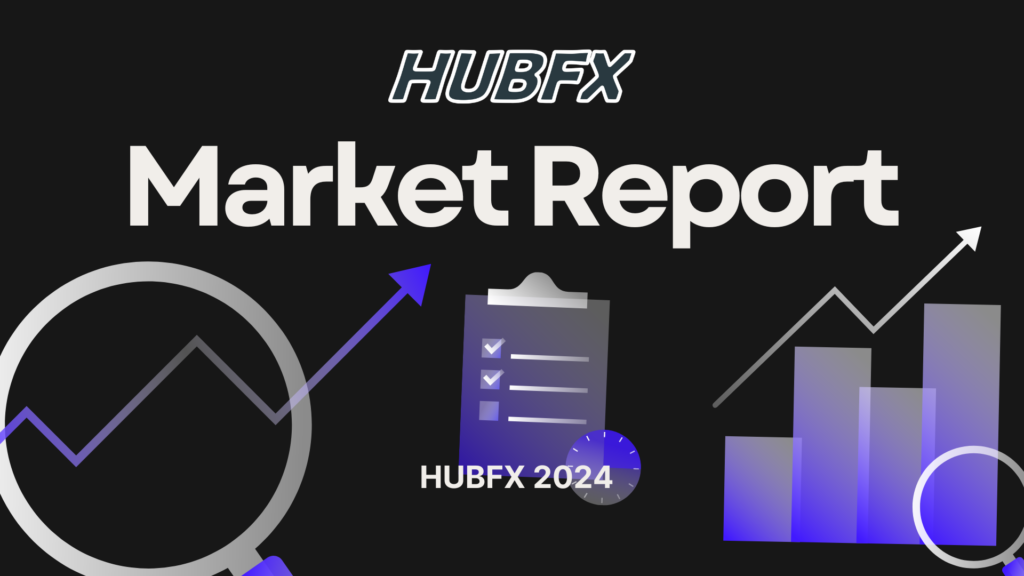HUBFX’s Take on Today’s Financial News: #USGDP #AtlantaFed
The economic world is buzzing today with a number of pivotal updates. One of the most significant developments comes from the United States, where the Atlanta Federal Reserve has adjusted its GDPNow forecast for Q3 2024. This downward revision, from 3.1% to 2.5%, reflects a subtle but meaningful shift in the trajectory of the U.S. economy, which is weighed down by disappointing construction spending and manufacturing data. Additionally, we saw important updates from the Swiss National Bank (SNB), further moves in oil prices tied to geopolitical risks, and technical analyses around currency pairs such as the USDCAD and USDCHF. Below, HUBFX dissects these key events and their broader implications for markets. 📊
Atlanta Fed Cuts Q3 GDPNow to 2.5% 📉
The Atlanta Federal Reserve’s GDPNow tracker, which offers a real-time estimate of U.S. economic growth, was revised downward to 2.5% from 3.1%. This is a significant adjustment and raises concerns about the robustness of U.S. economic activity, especially given the previous upward revision.
Key Drivers of the Revision:
- Construction Spending: Weak construction data released today by the U.S. Census Bureau played a large role in the adjustment. Construction activity is a barometer for broader economic health, and the dip suggests potential slowing in domestic demand and business investment.
- ISM Manufacturing PMI: The latest Institute for Supply Management (ISM) report also weighed on GDPNow estimates. Manufacturing activity contracted further, reflecting global supply chain issues and diminished private domestic growth.
Broader Implications for Markets:
This revision suggests that while the U.S. economy is still growing, it is doing so at a slower pace than initially anticipated. Slower consumption and private investment growth may impact corporate earnings in Q4, putting pressure on equity markets. Investors should also keep an eye on whether the Federal Reserve reacts to this softening growth with adjustments to its monetary policy stance. 💡
For traders, this could signal a pivot toward more defensive assets, especially as bond yields have been rising lately. As growth moderates, the Federal Reserve might adopt a more dovish tone, which could cap the upward pressure on U.S. Treasury yields.
SNB’s Schlegel Explains Recent Rate Cut 💷
Switching over to Europe, Swiss National Bank’s (SNB) board member, Schlegel, shed more light on last week’s unexpected rate cut, which saw the policy rate lowered to 1%. Schlegel cited lower inflationary pressures as the primary motivation behind this move.
What We Learned:
- Inflationary Pressures: Despite persistent inflation in many global regions, Switzerland is bucking the trend, with inflation coming in at a modest 1.1% in August. The strength of the Swiss Franc has helped curtail the cost of imported goods, thereby alleviating inflationary risks.
- Economic Outlook: Schlegel mentioned that while Switzerland’s services sector remains strong, the industrial sector is subdued. Lower external demand, particularly from Europe, poses risks for Switzerland’s export-driven economy.
- Tools for Further Action: The SNB has indicated it will continue using interest rates as the main tool to manage the economy but has not ruled out further interventions in the foreign exchange market if necessary.
Takeaway for Traders:
The Swiss Franc could remain under pressure if the SNB continues with its dovish outlook, especially as it hinted at potential future rate cuts. For investors, this presents an opportunity to trade on USDCHF or EURCHF movements. Moreover, the strong franc remains a headwind for Swiss exporters, which could become a point of concern for companies listed on the Swiss Stock Exchange. 📉
USDCAD Tests Key Technical Levels Amid Rising Oil Prices ⛽
In the world of currencies, the USDCAD pair is under scrutiny as it tests its rising 100-hour moving average at 1.3494. Recent declines in U.S. yields, coupled with rising oil prices, are driving the currency pair lower.
Technical Breakdown:
- Moving Averages: The pair briefly fell below the 200-hour moving average at 1.3509, indicating bearish sentiment in the market. However, it found support at the 100-hour moving average, offering a potential line of defense for buyers.
- Oil Prices: Oil prices, which directly impact the Canadian dollar, rose significantly today, with WTI crude trading above $70 per barrel. As Canada is a major oil exporter, higher oil prices tend to support the Canadian dollar, hence contributing to the USDCAD’s downward move.
Potential Scenarios:
Should USDCAD break below the 100-hour moving average, the next downside targets would be around 1.3486, followed by 1.3463. On the flip side, if buyers regain control, a move back above the 200-hour moving average could lead to a re-test of the 1.35328 level. Crude oil’s sustained rise may add further pressure to USDCAD, making it one to watch. 🔍
Geopolitical Risks Affect Oil and Market Sentiment 🌍
Geopolitical tensions remain elevated as Israel gears up to respond to recent missile attacks from Iran. While oil prices have surged due to concerns about a potential escalation, the broader market appears to be waiting for further developments before taking a clear direction.
- Crude Oil Prices: With oil now trading at around $69.83, markets are pricing in potential supply disruptions if the conflict in the Middle East escalates. The potential for strikes on oil infrastructure in Iran, or retaliation against oil-producing nations like Saudi Arabia, could further boost prices in the coming days.
- Risk-Off Sentiment: As tensions rise, risk assets such as equities are under pressure. WTI crude jumped by 2.44%, reflecting the broader market’s concern. Historically, energy stocks outperform in these environments, while riskier sectors like technology or emerging markets could see a pullback.
Investors should remain cautious, especially in the energy and defense sectors, which are particularly sensitive to geopolitical fluctuations.
Conclusion: A Tense Market Outlook with Slowing Growth and Rising Risks ⚠️
Today’s developments offer a stark reminder that global markets remain at the mercy of both economic fundamentals and geopolitical tensions. The U.S. growth outlook, as indicated by the Atlanta Fed’s GDPNow revision, is cooling down, which could prompt a revaluation of risk assets as earnings season approaches. On the other hand, geopolitical risks, particularly in the Middle East, are creating volatility in energy markets, further complicating the outlook for investors.
For HUBFX, the critical takeaway is that we are entering a period of heightened uncertainty. Slowing U.S. growth, dovish European central banks, and rising geopolitical risks will likely lead to a more cautious market. Investors should consider strategies that hedge against downside risks, including allocating capital to defensive sectors and safe-haven currencies like the U.S. dollar or Swiss franc.
As we move into the final quarter of 2024, it’s clear that both traders and long-term investors must keep an eye on multiple factors that could drive market volatility. 📊✨



